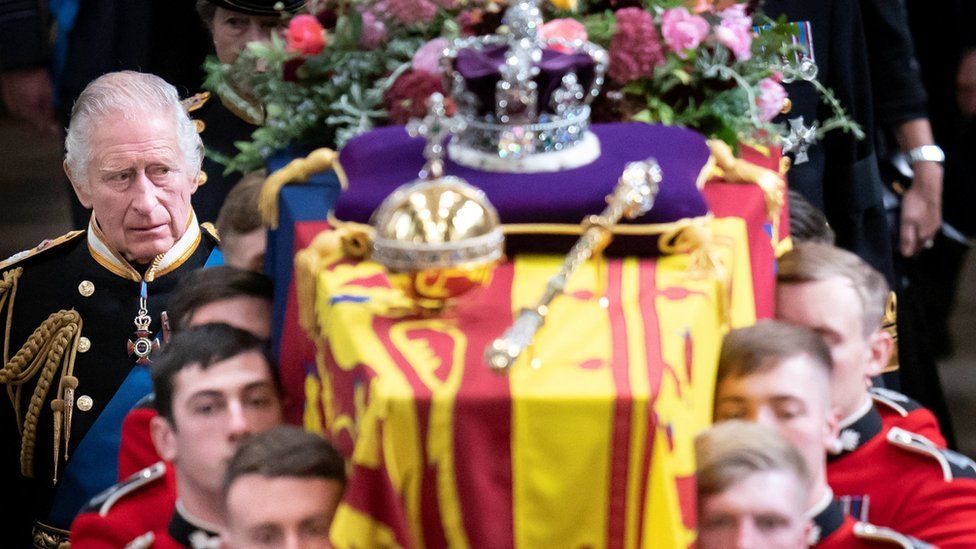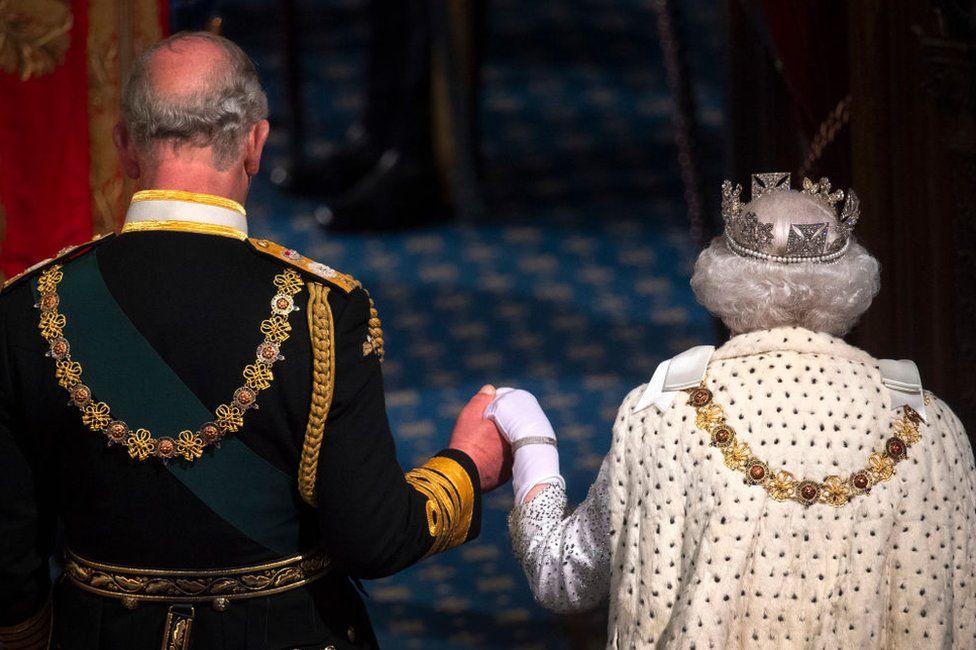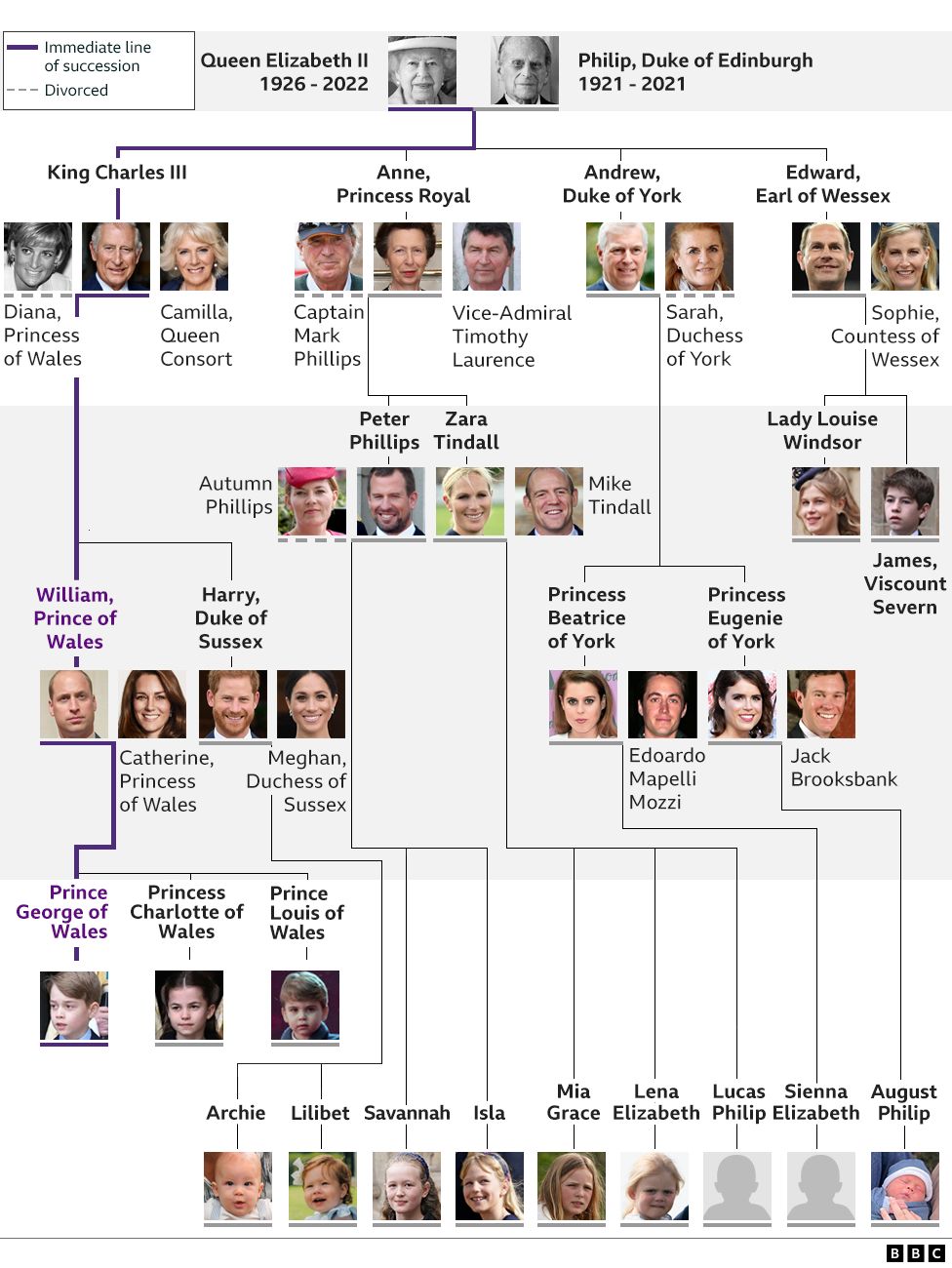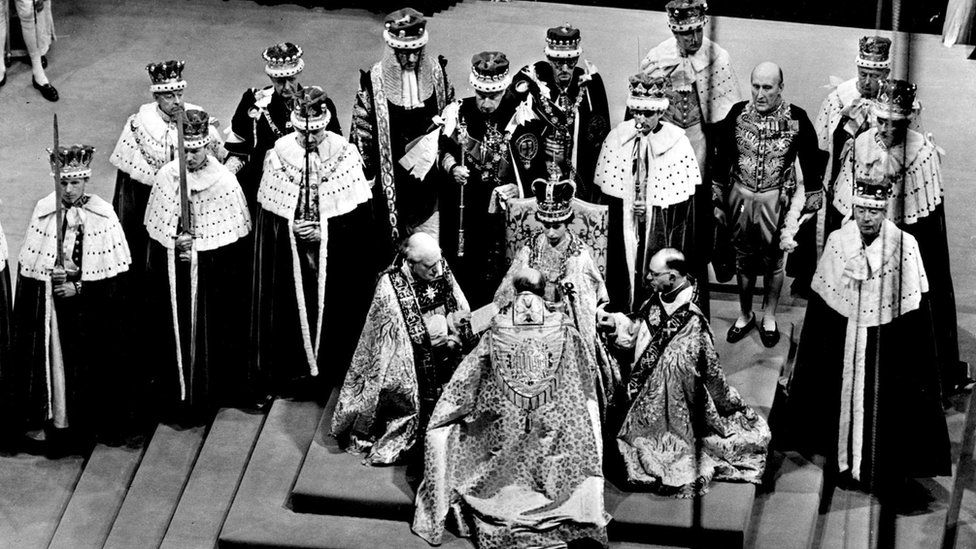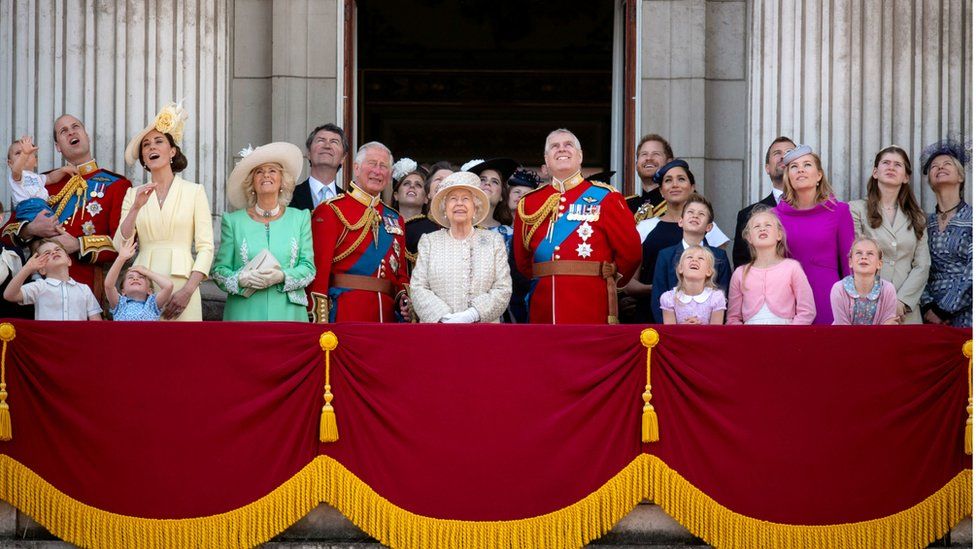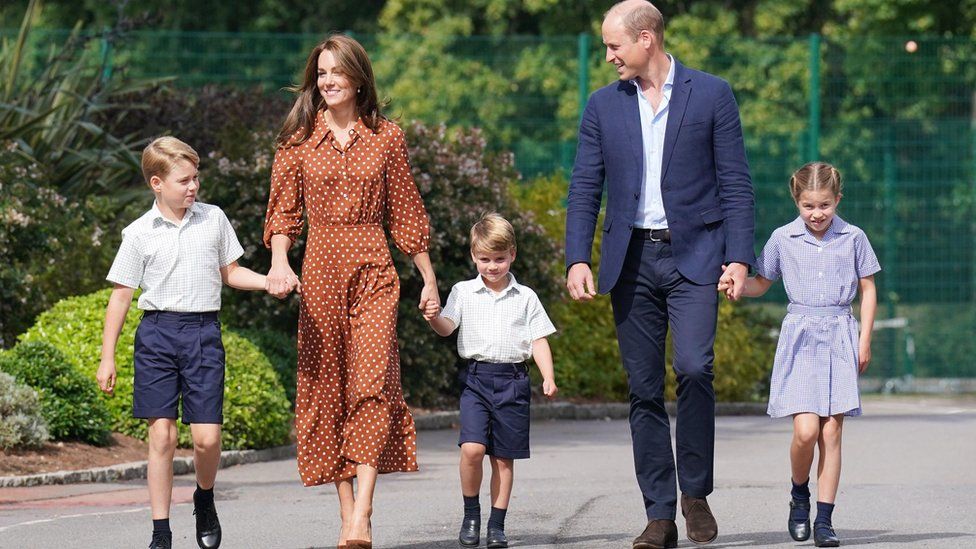Queen Elizabeth II has been laid to rest at Windsor Castle, following a state funeral at Westminster Abbey.
She has been succeeded as the UK's monarch by her son, King Charles III.
What happened after the Queen died?
A period of national mourning was declared after Queen died at Balmoral Castle, at the age of 96.
Her eldest son Charles inherited the throne immediately, and was formally proclaimed king two days later.
Thousands of people queued up to see the Queen's coffin lying in state in Westminster Hall in the Houses of Parliament in the days leading up to her funeral.
Her funeral service at Westminster Abbey was attended by 2,000 people, including leaders and dignitaries from around the world.
Thousands of people then lined the streets as her coffin was transported to Windsor Castle where a committal service was held. She was buried later, alongside her late husband the Duke of Edinburgh.
What does the King do?
The King is the UK head of state. However, his powers are symbolic and ceremonial, and he remains politically neutral.
He will receive daily dispatches from the government in a red leather box, such as briefings ahead of important meetings, or documents needing his signature.
The prime minister will normally meet the King on a Wednesday at Buckingham Palace, to keep him informed on government matters.
These meetings are completely private and there is no official record of what is said.
The King also has a number of parliamentary functions:
- Appointing a government - the leader of the party that wins a general election is usually called to Buckingham Palace, where they are formally invited to form a government. The King also formally dissolves a government before a general election
- State Opening and the King's Speech - the King will begin the parliamentary year with the State Opening ceremony. He will set out the government's plans, in a speech delivered from the throne in the House of Lords
- Royal Assent - when a piece of legislation is passed through Parliament, it must be formally approved by the King in order to become law. The last time Royal Assent was refused was in 1708
In addition, the King will host visiting heads of state, and meet foreign ambassadors and high commissioners based in the UK. He will normally lead the annual Remembrance event in November at the Cenotaph in London.
The new King is also head of the Commonwealth, an association of 56 independent countries and 2.5 billion people. For 14 of these countries, known as the Commonwealth realms, he is also head of state.
How does succession work?
The order of succession sets out which member of the Royal Family takes over as monarch when the existing one dies or abdicates. First in line - the heir to the throne - is the monarch's eldest child.
As Queen Elizabeth's first-born child, Charles became King on his mother's death and his wife, Camilla, became Queen Consort.
Royal succession rules were amended in 2013 to ensure that sons no longer take precedence over their older sisters.
King Charles's heir is his elder son, Prince William. The King has conferred on him the title of Prince of Wales, and he also inherits his father's former title of Duke of Cornwall.
Prince William's eldest child Prince George is second in line to the throne, and his daughter Princess Charlotte is third.
What happens at a coronation?
A coronation is the ceremony at which the monarch is formally crowned. It takes place after a period of mourning for the previous sovereign.
Elizabeth II became Queen on 6 February 1952 on the death of her father King George VI, but wasn't crowned until 2 June 1953.
It is not yet known when King Charles's coronation will take place.
Queen Elizabeth's coronation was the first to be broadcast live on TV, and was watched by more than 20 million people.
For the past 900 years, the coronation has been held in Westminster Abbey - William the Conqueror was the first monarch to be crowned there, and Charles will be the fortieth.
It is an Anglican religious service, carried out by the Archbishop of Canterbury.
The monarch is anointed with "holy oil", and receives the orb and sceptre, symbols of royalty. At the climax of the ceremony, the Archbishop will place St Edward's Crown on Charles's head - a solid gold crown, dating from 1661.
This is the centrepiece of the Crown Jewels at the Tower of London, and is only worn by the monarch at the moment of coronation itself.
Unlike royal weddings, the coronation is a state occasion - the government pays for it, and ultimately decides the guest list.
Who else is in the Royal Family?
- Prince William is the elder son of King Charles and his first wife, Diana, Princess of Wales. Following the death of the Queen, he became the Prince of Wales and Duke of Cornwall and retained the title of Duke of Cambridge. He is married to the Princess of Wales and Duchess of Cornwall and Cambridge (Catherine). They have three children: Prince George, Princess Charlotte and Prince Louis
- The Princess Royal (Princess Anne) was the Queen's second child and only daughter. She is married to Vice Adm Timothy Laurence. She has two children with her first husband, Captain Mark Phillips: Peter Phillips and Zara Tindall
- The Earl of Wessex (Prince Edward) was the Queen's youngest child. He is married to the Countess of Wessex (Sophie Rhys-Jones). They have two children: Louise and James Mountbatten-Windsor
- The Duke of York (Prince Andrew) was the Queen's second son. He has two daughters with his former wife, the Duchess of York (Sarah Ferguson): Princess Beatrice and Princess Eugenie. Prince Andrew stepped down as a "working Royal" in 2019 after a controversial Newsnight interview about allegations that he had sexually assaulted Virginia Giuffre. In February 2022, he paid an undisclosed sum to settle the civil sexual assault case Ms Guiffre brought against him in the US
- The Duke of Sussex (Prince Harry) is William's younger brother. He is married to the Duchess of Sussex (Meghan Markle). They have two children: Archie and Lilibet. In 2020, they announced they were stepping back as senior royals
Where do members of the Royal Family live?
King Charles and the Queen Consort are expected to move to Buckingham Palace. They previously lived in Clarence House in London and at Highgrove in Gloucestershire.
The Prince and Princess of Wales recently moved from Kensington Palace in west London to live in Adelaide Cottage, on the Queen's Windsor Estate.
Prince Harry and Meghan Markle live in California.
How was the Queen's Platinum Jubilee celebrated?
The Platinum Jubilee was the Queen's fourth - she marked her Silver Jubilee in 1977, her Golden Jubilee in 2002 and her Diamond Jubilee in 2012.
She was born on 21 April 1926 but also has a second, official birthday - in June - when ceremonial events take place.
This tradition started with the Queen's great-grandfather Edward VII, who was born in November, to make it more likely that there would be good weather for public festivities.
The main Platinum Jubilee celebrations were during a four-day bank holiday weekend in June, and included a special Trooping of the Colour, a concert outside Buckingham Palace and a pageant.
Thousands of street parties were held, and beacons were lit across the UK.

